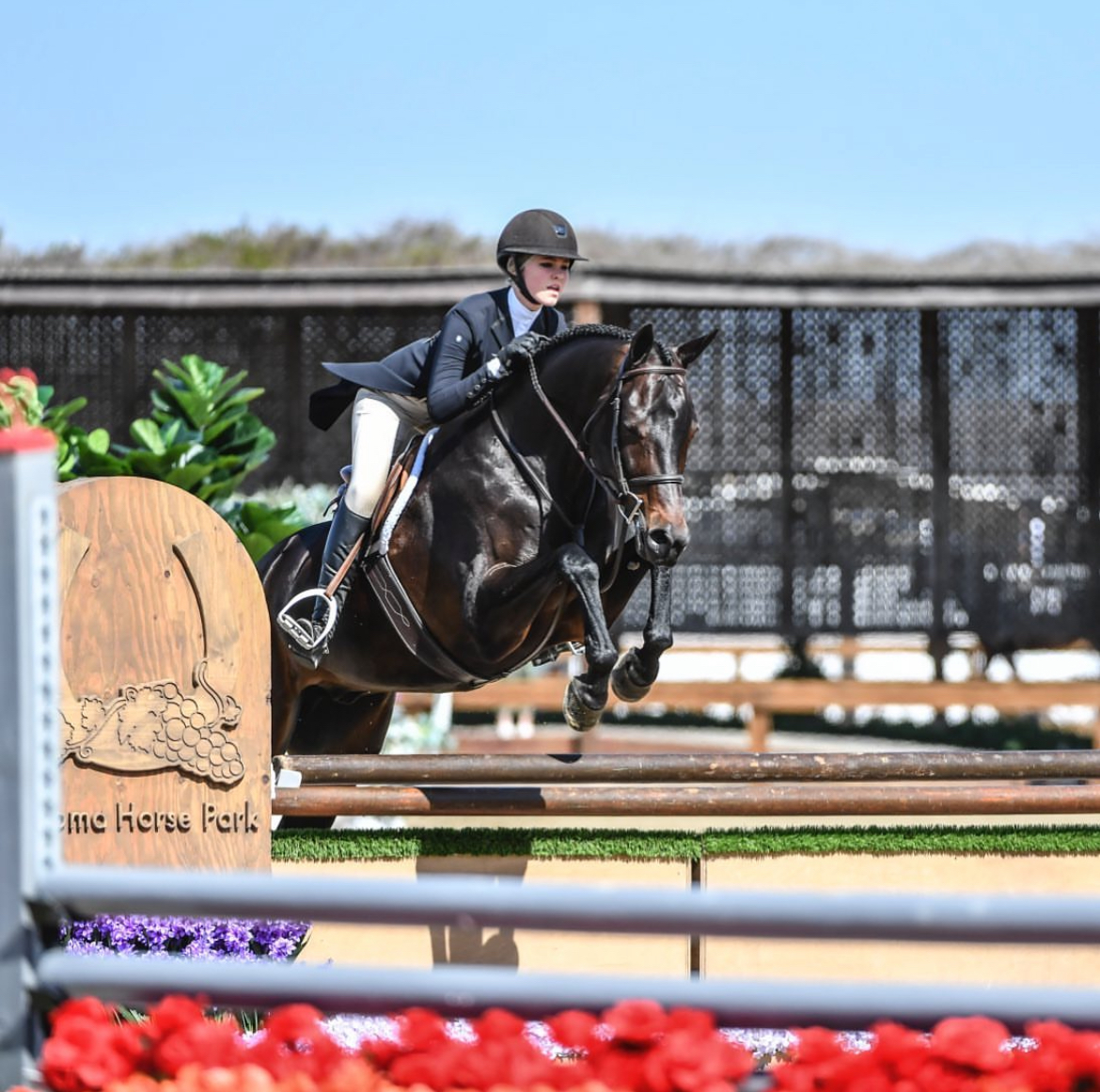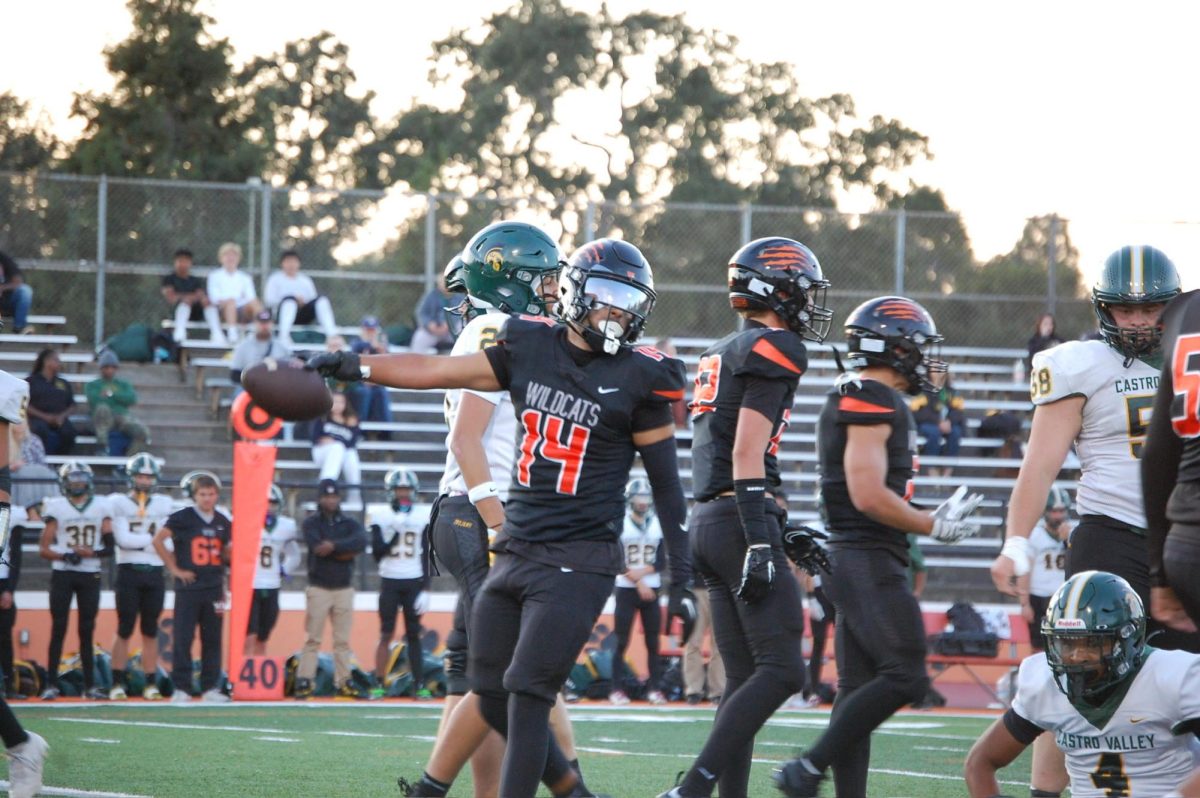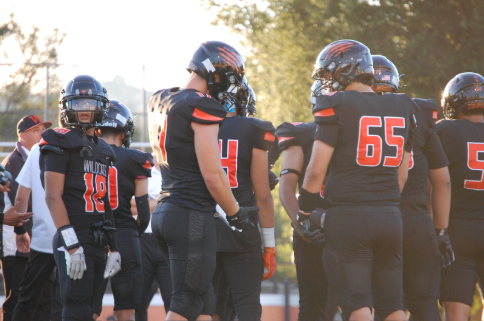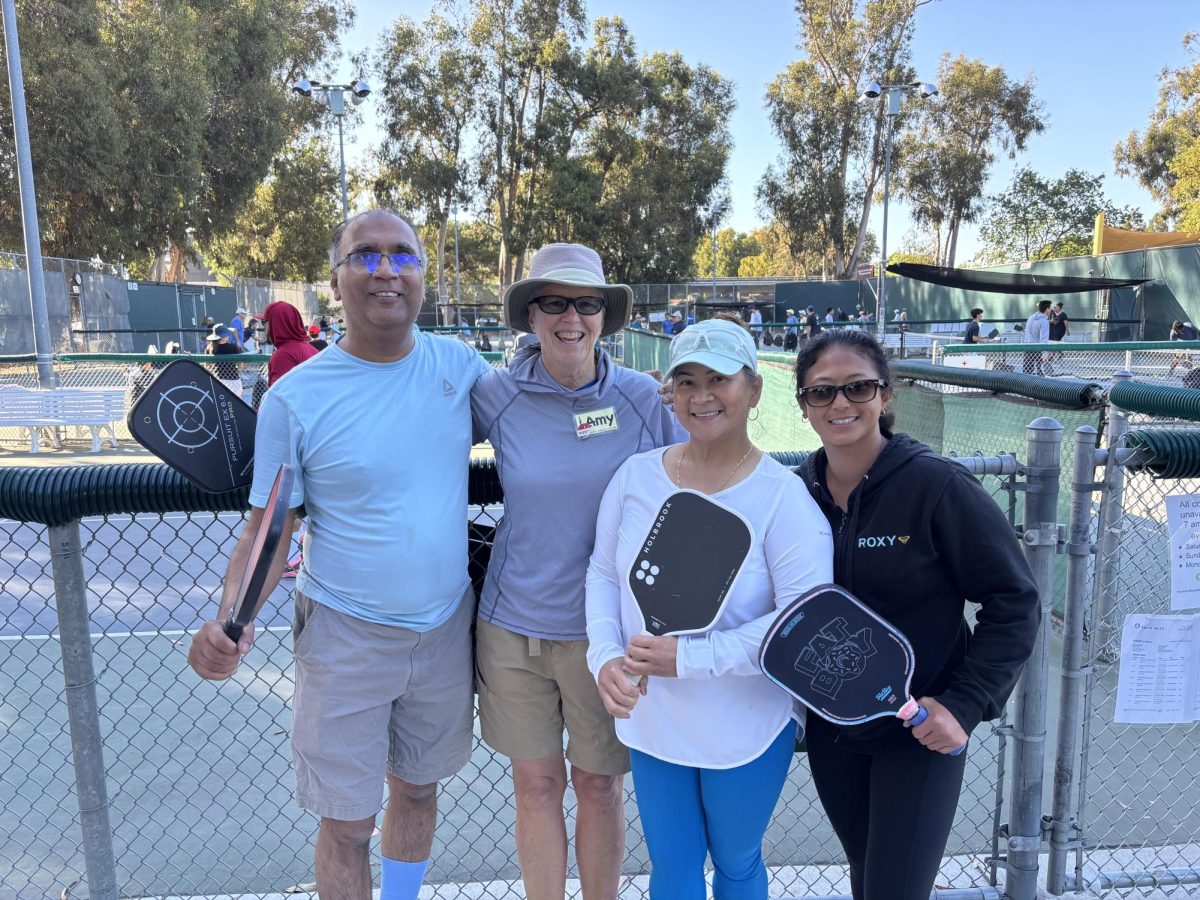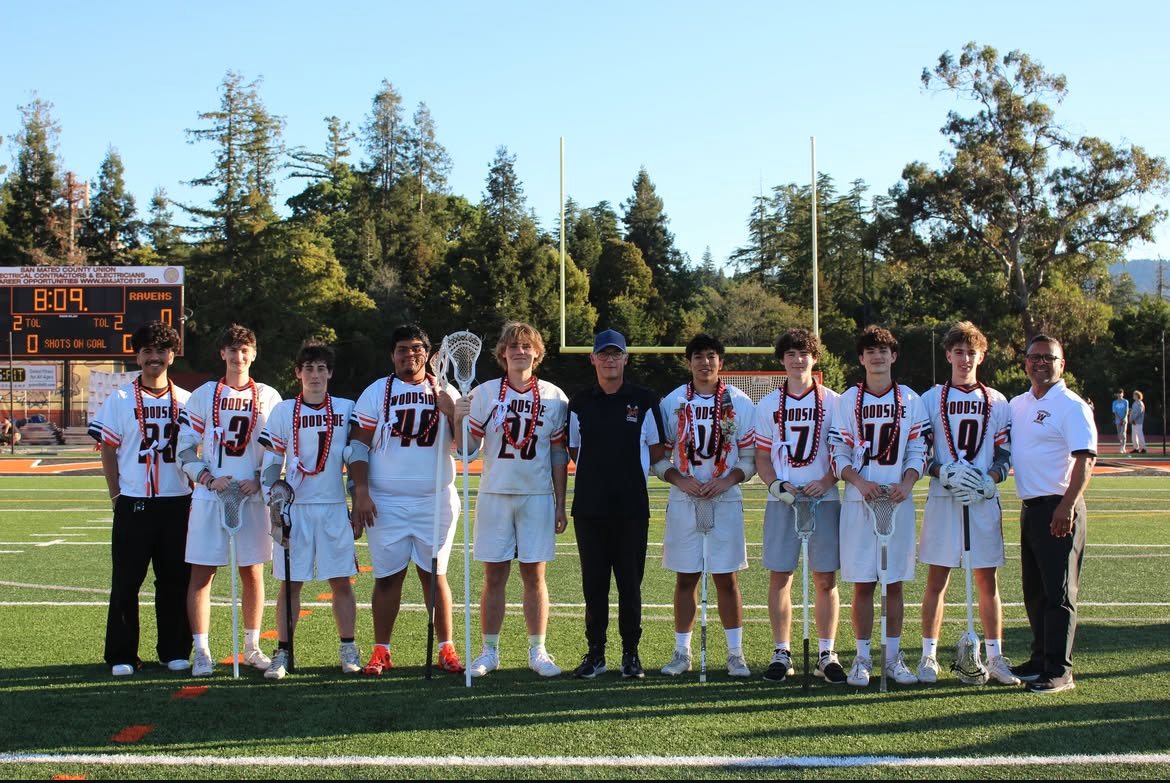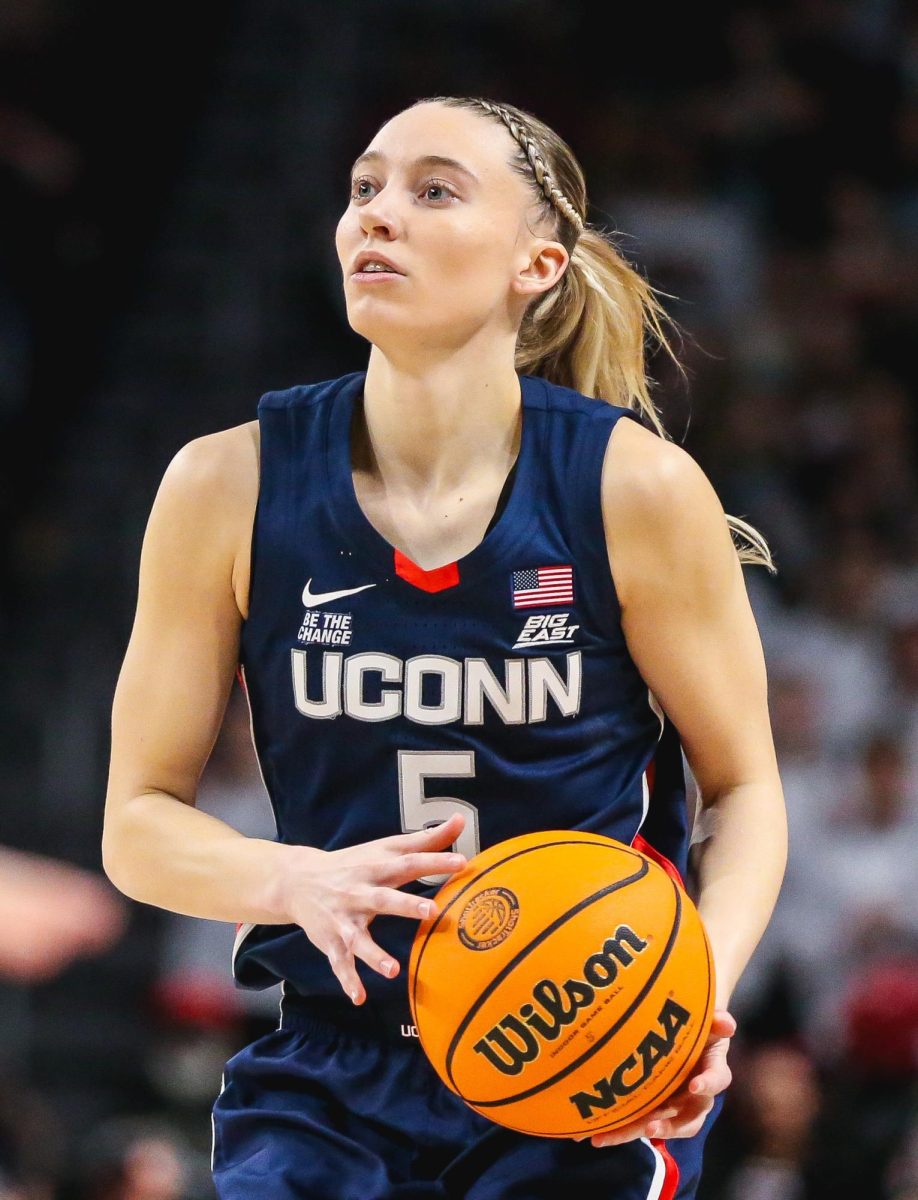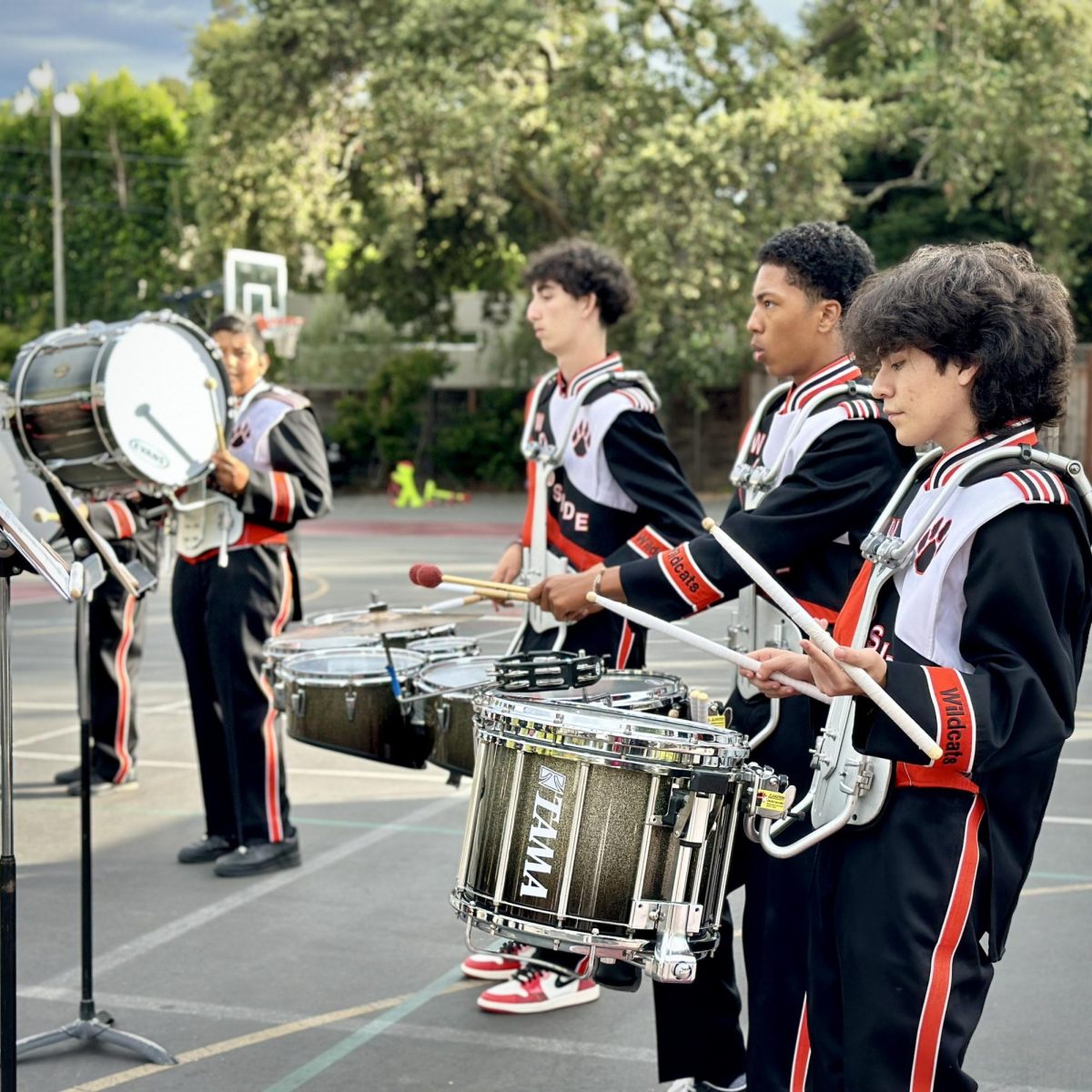At Woodside High School, equestrians strive to play in college and beyond. Now, they are aiming to continue through college.
Fae Krauskopf, a junior, started riding horses around 5 and 6, and then picked up polo. Polo is where two teams of four aim to hit a wooden ball through goal posts at the end of a field, with long mallet-like sticks.
“UVA [University of Virginia] on the east coast has a really good polo program and so this summer I’m going to a few clinics, which apparently you need to go to if you want to get accepted there and play polo,” Krauskopf said. “One of my old coaches said I had the potential to go pro so I want to be close by somewhere where I can maybe be a ‘weekend pro’ or just continue playing in the future.”
Blair Conlan, a senior at Woodside, is a show jumper, equitation, and hunters. Showjumping is where the rider is judged on how they complete a course, in particular, on speed and neatness. Equitation is based on how the rider looks, and how they handle the horse. Lastly, hunters is where the rider and horse are judged on how they work together.
“I plan to ride in college and continue competing on the A circuit in the future,” Conlan said. “There are many colleges that have D1 equestrian teams. However, when you age out of junior status (under 18) you either choose to be an amateur or go pro. I am still deciding what my future plan will be.”
Junior Julia Beauchamp Crandon, who has continued to make youth riding teams, looks to pursue riding and making teams in college.Along with focusing on colleges and the future for riding, for Crandon, horseback riding has been an outlet to help reduce stress and being able to forget about any troubles.
“Horseback riding makes you forget about all other worries in life,” Conlan said. “When you are riding a horse, you cannot be thinking about your other problems or stresses. Horses are very spiritual animals and can sense when you are sad, stressed, or mad and often they will react in ways that help you conquer your stress or sadness.”
Misconceptions people have about equestrians have led them to believe that riders are abusive to their horses is true, but actually isn’t.
“A lot of people think that polo is a lot about drugging horses, which is obviously not good,” Krauskopf said. “But from every experience that I’ve seen, [no one has] drugged their horses or really abused them.”
Another misconception about equestrians is that they are lazy.
“A lot of people believe equestrians just sit there and do nothing but that couldn’t be farther from the truth,” Conlan said.“It takes a lot of work and strength to control a 1400 pound animal that has a mind of its own. Most equestrians put in a lot of work not just in the stable but in the gym to be strong enough to control these animals. Many people have died because of horseback riding and it can be very dangerous if you don’t know what you’re doing.”
Training for polo is not easy work, from caring for the horse, to working together with their teammates.
“On [an] average day, [I start by] going to the barn. [I then] get all the horses ready, get them out of their stalls, and make sure that they’re all nice and clean, that they’re not too dusty, tack them up, do our lesson,” Krauskopf said. “Shook them so pretty much take all the tack off, wash them down if it is warm enough or just try and brush them and then take care of them. We’re lucky we have grooms to do all the feeding and mucking out stalls. So we’re lucky for that”
Training before a competition, works differently than training for polo, and also depends on the specific event.
“Before a competition, an average training day consists of 30 minutes of flatwork focusing on stretching the horse and getting them focused on jumping,” Conlan said. “Flatwork also works on my equitation as I often do no-stirrups training to build my leg and core muscles. Then, we usually do 45 minutes to an hour of jumping. We focus on each horse’s problems when jumping by using a variety of training techniques from complicated jumping courses to scary jumps that help the horses confidence. After training, the horses get a 20-minute cool-off walk followed up by a variety of treatments on their legs to keep them sound and healthy.”
With so much training and working with the horses, it takes up a lot of time after school hours.
“The most difficult part about riding is probably missing so much school for competitions and having really late practices,” said Beauchamp Crandon. “I don’t get home till late and then keeping up with the work can sometimes be difficult.”
Money has a big impact on riding as well, and dedication means a lot with this.
“When you are competing on the A-circuit, it costs thousands of dollars every show and every month to compete, house, train, and feed your horse,” Conlan said. “It’s a huge financial commitment that can be rewarding at times but extremely stressful at other times.”
If you ever wish to ride horses for the first time, or want to get back into it after a while, there are always great horses to start with.
“It’s a super welcoming community,” Krauskopf said “We have people who have never been on a horse who have never even touched on or been around them their entire lives. We put them on a nice safe horse and were able to kind of get an understanding [of their abilities] more or less.”


